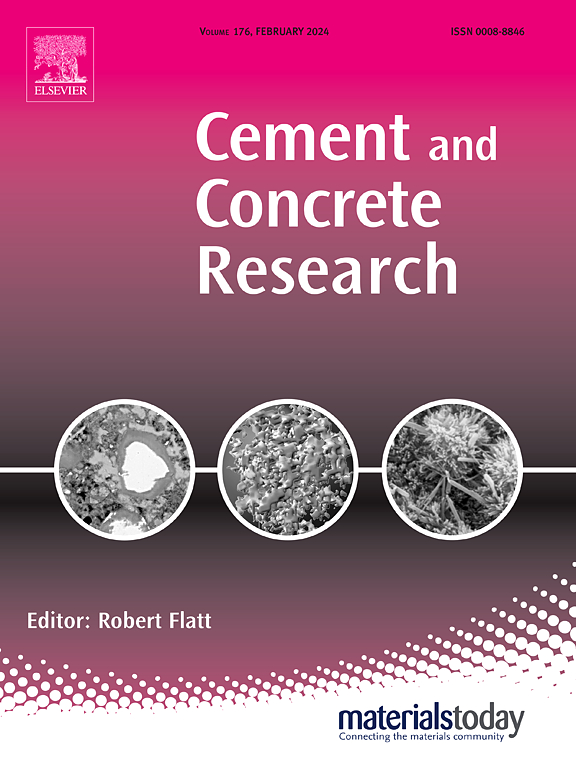The physiochemical alterations of calcium silicate hydrate (C-S-H) under magnesium attack
Abstract
The interaction of magnesium and calcium silicate hydrate (C-S-H) is of importance in the realm of cement chemistry given the need for sustainable binders and durability concerns. In this paper, comprehensive analyses were conducted to reveal the effects of magnesium on the physiochemical properties of C-S-H. Three factors including anion types, concentrations of magnesium solution as well as the Ca/Si ratio of the starting C-S-H samples were considered. It is demonstrated that the stability of C-S-H is impaired under magnesium attack. Magnesium silicate hydrate (M-S-H) and/or brucite are prone to precipitate on the surface of C-S-H samples after being attacked by 0.05 mol/L magnesium, which accounts for the high amount of magnesium measured by EDS. In contrast, at a magnesium concentration of 0.5 mol/L, M-S-H with a trace amount of calcium becomes the dominating phase. The Ca/Si and Mg/Si ratios of hydrates show an increase with the Ca/Si ratio of starting C-S-H samples. The XPS results indicate that a small amount of magnesium may enter into the C-S-H structure after exposure to 0.05 mol/L magnesium solution, presenting a different Mg 1s binding energy compared with pure M-S-H. Anion types do not exhibit a pronounced influence on the deterioration of C-S-H, except gypsum is observed in the hydrates when sulfate ions are present.

 求助内容:
求助内容: 应助结果提醒方式:
应助结果提醒方式:


